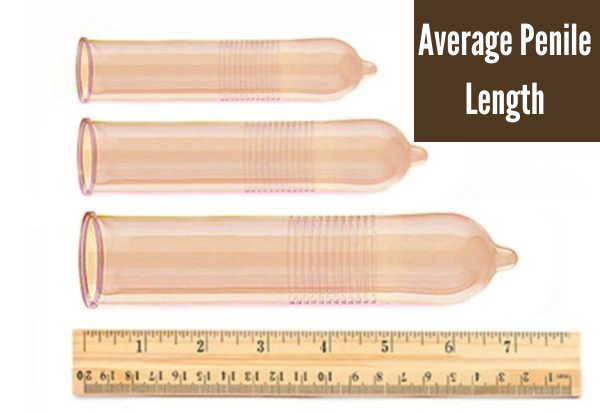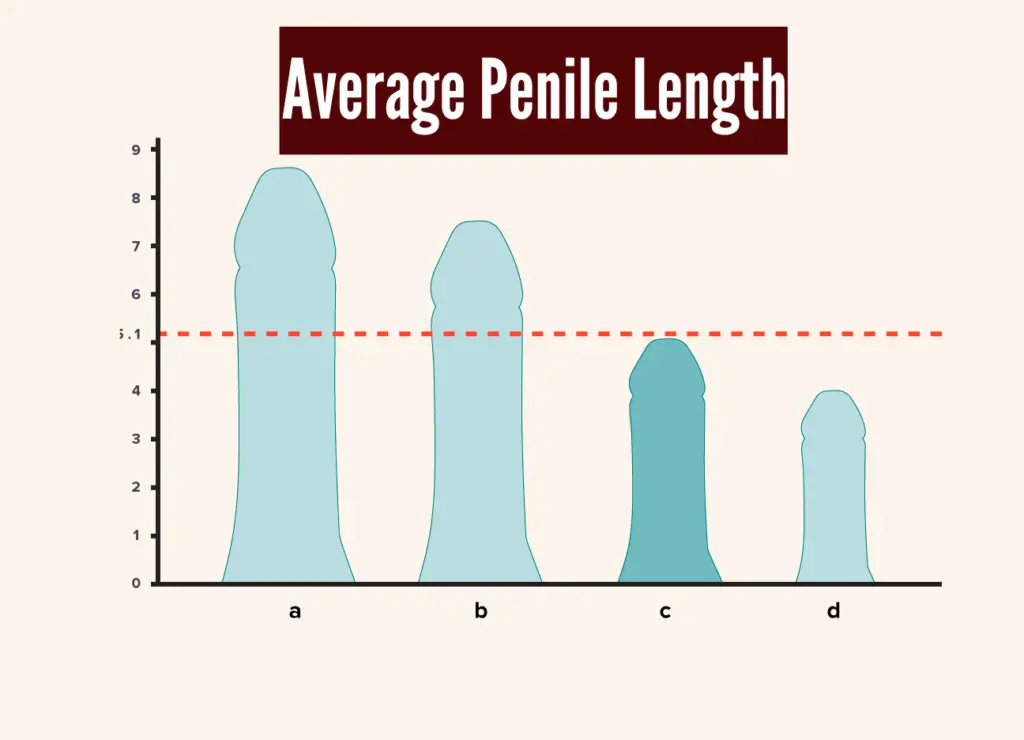Understanding Average Penile Length: Myths, and Measurements

Penile health is an important aspect of overall male health, yet it’s often shrouded in myths and misconceptions. Whether you’re a medical professional looking to provide accurate information to your patients or simply someone curious about the facts, this guide will give a comprehensive overview of average penile length.
Why Understanding Penile Length Matters
Understanding average penile length can improve self-esteem, help diagnose medical conditions, and eliminate unnecessary concerns. Accurate information is essential for medical professionals to provide quality care and effectively address patient concerns.
Table of Contents
What is Penile Length?
Penile length refers to the measurement of the penis. This measurement can be taken when the penis is flaccid (soft and not erect) or erect (hard and ready for sexual activity).
What is the Average Penile Length?
Many studies have been conducted to determine the average penile length. According to a comprehensive study published in the British Journal of Urology International (BJUI), the average penile length is as follows:
- Flaccid Length: The average flaccid penile length is approximately 3.6 inches (9.16 cm).
- Erect Length: The average erect penile length is around 5.2 inches (13.12 cm).
These measurements can vary slightly depending on the population studied and the methodology used.
Also Read: How to Increase Girth Size Permanently At Home?
Measuring Penile Length
Accurate measurement is essential for obtaining relevant data. Here’s how you do it:
Flaccid Measurement:
- Use a ruler or measuring tape.
- Measure from the base at the pubic bone to the tip of the glans (head of the penis).
- Ensure the penis is in a relaxed state and measure along the top.
Erect Measurement:
- Achieve a full erection.
- Use the same method as the flaccid measurement, ensuring the ruler is pressed against the pubic bone to account for any fat pad.
Common Myths and Misconceptions
The Bigger, The Better?
One of the most persistent myths is that bigger is always better. However, studies show that sexual satisfaction isn’t solely dependent on penile size. Factors like intimacy, communication, and technique often play more significant roles in sexual satisfaction.
Can Size Be Increased?
Various products and techniques claim to increase penile size, but most lack scientific backing. Methods like surgery are risky and often come with complications. It’s essential to approach such options cautiously and consult a healthcare professional.
The Role of Pornography
Pornography often portrays exaggerated depictions of penile size, leading to unrealistic expectations. It’s crucial to remember that these depictions are not the norm and should not be used as a benchmark.

Differences Between Flaccid and Erect Measurements
Understanding the differences between flaccid and erect penile measurements is crucial for accuracy. A flaccid penis can vary significantly in size based on various factors such as temperature, stress, and physical activity.
This variability means that flaccid measurements may only sometimes give a clear picture of overall size. In contrast, erect measurements are more consistent and reliable.
Flaccid Measurements:
- Variability: Flaccid length can change throughout the day and is influenced by external conditions.
- Technique: It’s key to measure while the penis is relaxed and at room temperature for the most accurate reading.
Erect Measurements:
- Consistency: Erect length tends to be more stable and is less influenced by external factors.
- Standardization: Achieving full erection before measurement ensures uniformity and is the accepted standard for comparative analyses.
Recognizing these differences can help understand the data better and demystify common misconceptions about penile length.
Cultural Perspectives on Penile Size
Global Averages
Penile size varies significantly across different cultures and populations. Understanding these variations can offer a more comprehensive global perspective on what is considered average.
Historical Views
Historically, different cultures have had varying attitudes toward penile size. Some ancient cultures valued larger sizes as symbols of fertility and strength, while others placed less emphasis on size.
Modern-Day Implications
In today’s society, the influence of media and pornography has heightened concerns about penile size. Understanding the cultural context can help develop a balanced view of what constitutes a healthy and average size.
Conclusion
Understanding average penile length is crucial for both men and healthcare providers. It fosters better self-awareness and aids in medical diagnosis and treatment. If you have concerns about your penile size, consult a healthcare professional for personalized advice and support.
FAQs About Penile Length
What is the average penile length worldwide?
The average erect penile length worldwide is about 5.2 inches (13.12 cm).
Can penile length change over time?
Penile length can change slightly with age and health conditions, but significant changes are rare.
Is there a link between penile length and race?
Studies show minor variations across different ethnic groups, but these differences are generally insignificant.
How do I measure my penile length accurately?
Measure from the pubic bone to the tip of the glans while fully erect to get an accurate reading.
Are there any safe ways to increase penile length?
Some non-surgical methods, such as vacuum pumps and extenders, may offer temporary results, but it’s important to approach them cautiously and consult a medical professional.





